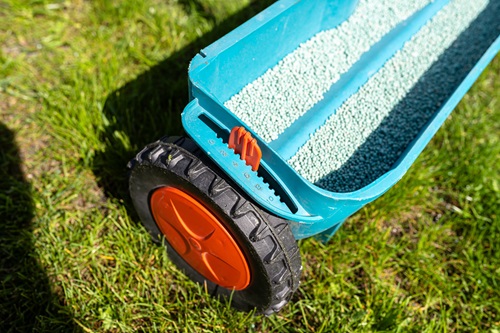
If your lawn isn’t looking its best, you might think about applying fertilizer. Although this instinct is not always correct, it’s important to remember that details are everything when it comes to lawn care. It is important to consider how fertilizer should be applied to lawns, as well as the best time. You could end up with a burnt lawn or wasted fertilizer if you don’t take these things into consideration.
Find out how to make your lawn look great and be the envy of everyone else with these tips for lawn care in Myrtle Beach.
Lawn Care Tips: When to apply fertilizer
The type of grass that you have will determine the best time to apply lawn fertilizer. The northern United States tends to grow cool-season grasses while the South grows warm-season grasses. Both types of grasses are best treated by lawn growers late in the spring or late in summer. Cool-season grasses require a third application, which is usually done in the fall.
The late autumn feeding is the most crucial for cool-season grasses. Winterizing is more than just preparing your lawn for winter. The nutrients provided will also help to get the lawn ready for the spring.
Before you get started
You can buy the fertilizer in advance and keep it handy so you are ready for when it’s sunny and you have time to apply it. Before you start, make sure to check the forecast.
Measure the area of your lawn. The calculation can be done once, unless your lawn is larger. Keep the calculation for later use. Even if your yard is irregularly shaped, you don’t need any fancy math tools or a lot of mathematical knowledge to calculate the area.
Your lawn can be divided into rectangular sections. Decide beforehand on how big you want your lawn to be, and then use the tape measure to measure the area. Spray paint is used for marking the edges so you know exactly where you are. Continue to do this for each section of the lawn until it is all covered.
Pick a spot to fill your spreader
Do not put any spreader out on your lawn. You could end up burning it if you spill any on your lawn. Spread it on a driveway or other hard surface instead.
Check the Instructions for Bag
For application guidelines, check the bag. It will show you where to set your spreader, and how much fertilizer to cover 1000 feet. (Be aware that too much fertilizer can cause lawn damage).
Setup Spreader
Adjust the spreader settings to match those in the instruction manual.
Make sure to fill your spreader
This is where you will need to measure the area of your lawn. If the directions say to fertilize 1000 feet of lawn, but your lawn is only 500 feet in size, then you should fill the spreader with half the amount. You’ll need to double your spreader if you have 2000 square feet.
Perimeter Fertilizer
Begin by applying the fertilizer along the lawn’s edges. Then, walk at a steady pace.
Finalize Fertilizer Application
To avoid any uneven fertilizer application, turn off the spreader after you’ve covered all edges. Turn the spreader off and apply fertilizer to the remainder of the lawn. Moving at an even pace around the perimeter, continue walking. You can check coverage as you move; if gaps exist, make overlapping passes.
The Fertilizer Needs Water
Because rain can provide even coverage, it’s best if the earth follows up with moderate and steady rainfall. If nature isn’t cooperating, you can water the fertilizer yourself.
Call Conner’s Lawn Care Service now if you need professional help in maintaining your lawn.
Conner’s Lawn Care Service
Myrtle Beach, SC
843-504-4901
http://connerslawncare.com/

